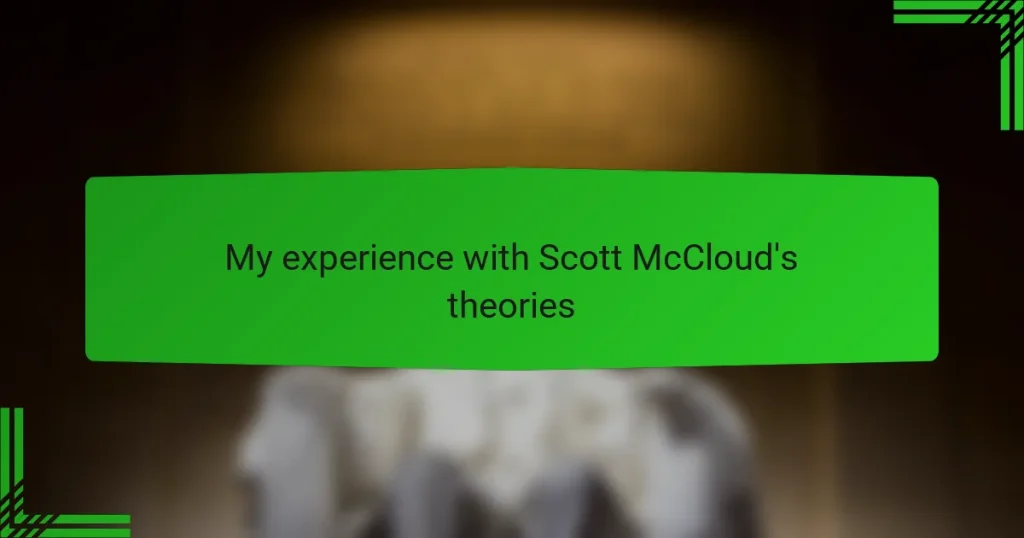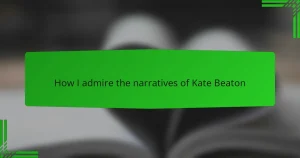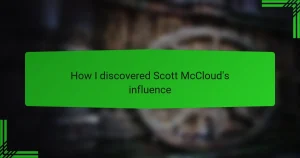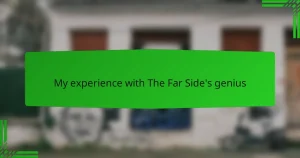Key takeaways
- Webcomics archives are valuable resources for discovering diverse storytelling and supporting emerging artists.
- Scott McCloud’s theories emphasize the unique visual language of comics, enhancing reader engagement through concepts like “closure.”
- Experimentation in webcomics allows creators to tackle complex themes, pushing the boundaries of the medium.
- Applying McCloud’s insights helps improve clarity, pacing, and narrative structure in webcomic creation.
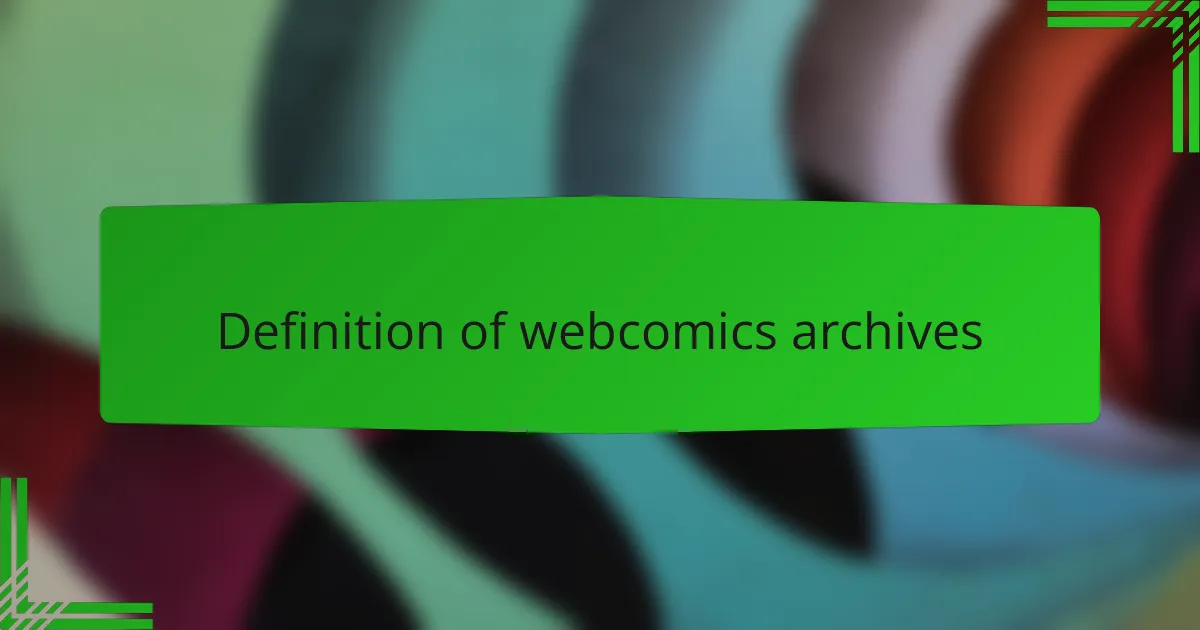
Definition of webcomics archives
Webcomics archives are digital collections that store and organize webcomics, allowing readers to access a diverse array of comics from various creators. In my experience, browsing through these archives feels like uncovering hidden treasures. Each click often leads to a new world, complete with unique art styles and storytelling techniques that ignite my imagination.
These archives serve not only as a repository for completed works but also as a platform for emerging artists to share their stories. I remember stumbling upon an indie webcomic that, despite its rough edges, resonated deeply with me, showcasing the power of personal connection in storytelling.
- Webcomics archives provide a vast resource of content, including completed stories and ongoing series.
- They promote the discovery of new artists, fostering a sense of community among creators and readers.
- Many archives offer search features to easily filter by genre, art style, or popularity.
- Accessibility allows readers from around the globe to engage with diverse narratives and cultures.
- They can also include programming or tutorials that help aspiring webcomic creators learn from established professionals.
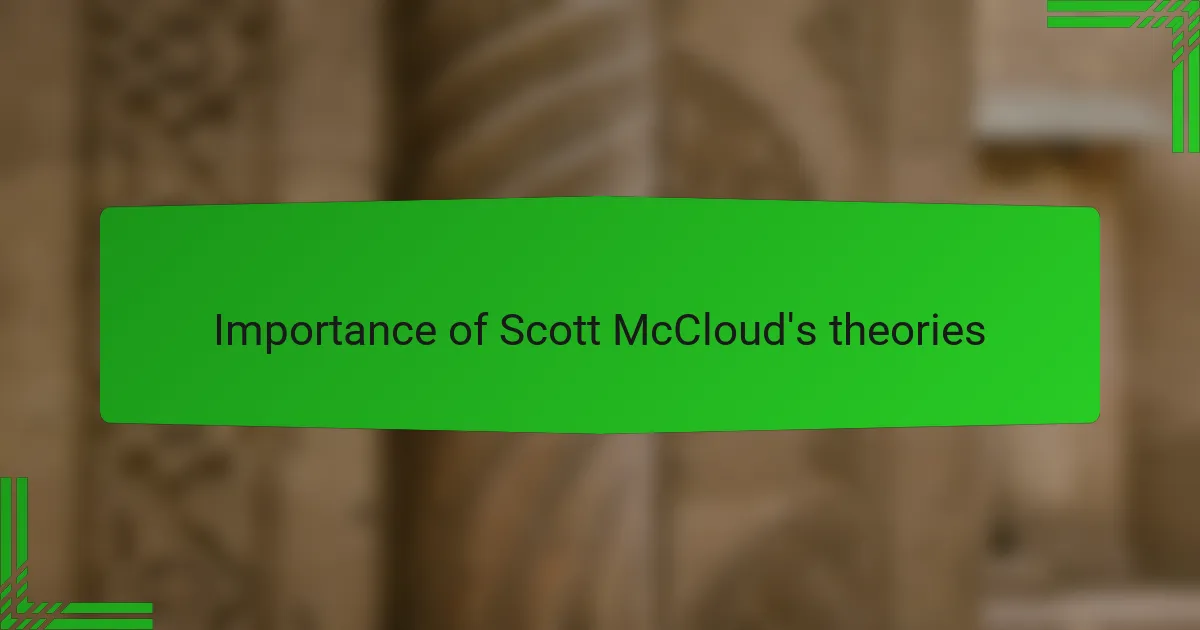
Importance of Scott McCloud’s theories
Scott McCloud’s theories have profoundly impacted how I understand and create webcomics. His insights into the visual language of comics have helped me appreciate the nuances of panel transitions, pacing, and the interplay of words and images. I remember the first time I applied his concept of “closure” in my work; it transformed how I engaged readers, inviting them to actively participate in filling in the gaps of the story.
Understanding McCloud’s perspective on comics as a medium rather than a genre has been a turning point for many creators. He argues that comics can convey complex ideas and emotions by combining visual and textual elements in unique ways. This realization inspired me to experiment with my storytelling techniques, leading to richer narratives that resonate more deeply with my audience.
- Comics as a visual language: McCloud emphasizes that comics communicate ideas and emotions through a unique combination of images and words.
- Closure and reader engagement: His concept of “closure” invites readers to actively participate in the narrative, enhancing their connection to the story.
- Beyond stereotypes: McCloud encourages creators to see comics as a versatile medium, pushing the boundaries of what comics can achieve.
- Impact on narrative structure: His analysis of time and space in comics helps writers construct more effective pacing and flow in their storytelling.
Incorporating these theories into my work has not only refined my skills but also deepened my passion for creating compelling webcomics.
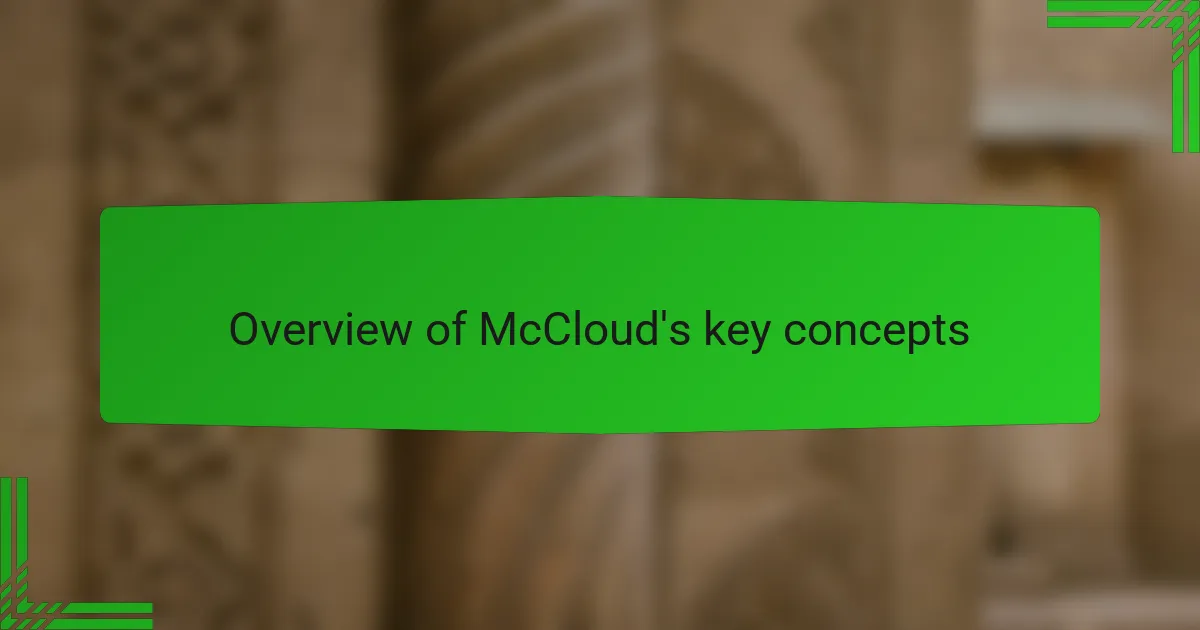
Overview of McCloud’s key concepts
Scott McCloud’s key concepts revolve around understanding comics not just as entertainment, but as a profound medium for communication. He highlights how the interplay between images and text can evoke emotions and convey complex ideas, which I’ve found to be incredibly illuminating. Have you ever read a comic and felt a surge of emotion, just from the way the panels were arranged? That’s exactly what McCloud is talking about.
One idea that struck me was his notion of “closure,” the ability of readers to fill in gaps between panels. I remember the first time I consciously implemented this in my work, where I let the space between images allow for pauses and reflections. It instantly enhanced the reader’s immersion, drawing them deeper into the narrative. This level of engagement has allowed me to connect more profoundly with my audience, making each comic an interactive experience rather than a linear one.
Additionally, McCloud challenges the stereotype that comics are just for kids or simple stories. By viewing comics as a versatile medium, I’ve been inspired to experiment with themes I never thought would fit into a comic format. This realization has broadened my creative scope, enabling me to tackle serious subjects while maintaining the playful essence of the comic style. It’s a journey that continues to evolve every time I explore new ideas!
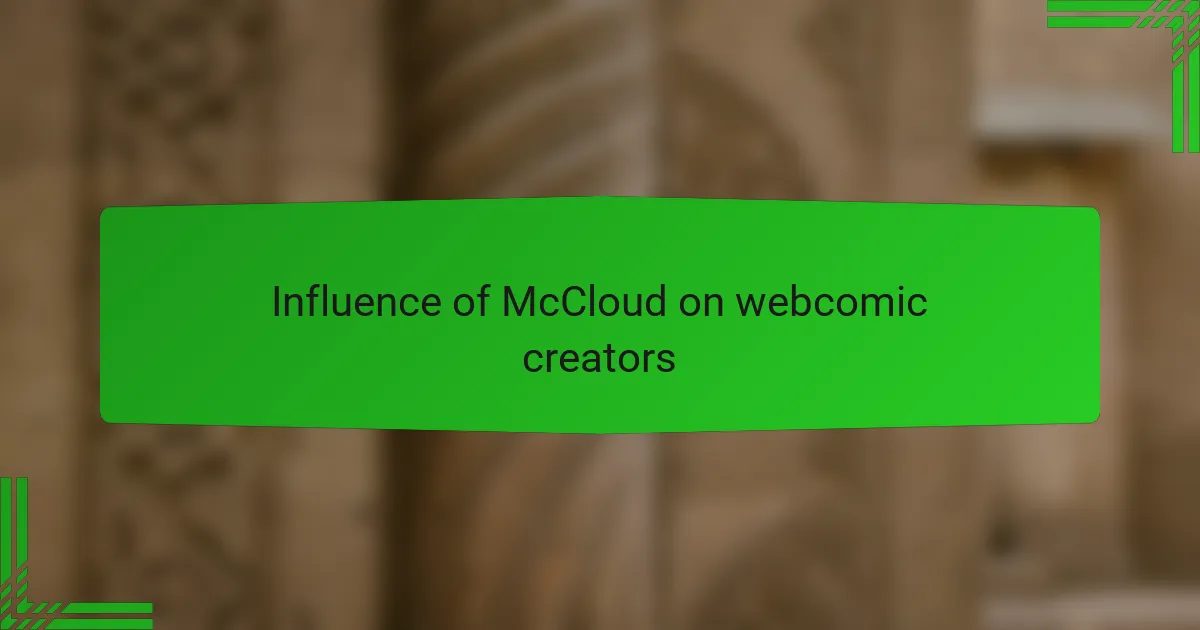
Influence of McCloud on webcomic creators
Scott McCloud’s theories have undeniably shaped the landscape of webcomics. His insights into the interplay of visuals and narrative have inspired countless creators to experiment with the medium. I remember the moment I first read “Understanding Comics”; it was like a light bulb went off, making me rethink my storytelling approach.
Many webcomic creators cite McCloud’s discussions on time and space as pivotal in constructing engaging narratives. I’ve often found myself revisiting these concepts as I plan my panels, discovering new layers of meaning with each project.
- Understanding the Medium: McCloud emphasizes the unique aspects of comics, encouraging creators to leverage visual storytelling effectively.
- Pacing and Timing: His breakdown of how time is portrayed in comics allows creators to manipulate reader experience.
- Engagement and Reader Participation: McCloud’s focus on the active role of the reader has taught many of us about fostering interaction within our stories.
- Experimentation with Styles: Creators are inspired to push boundaries in visual style due to McCloud’s theories, leading to innovative webcomic aesthetics.
- Community Building: His work highlights the importance of storytelling in connecting with audiences, fostering a sense of community among creators and readers alike.
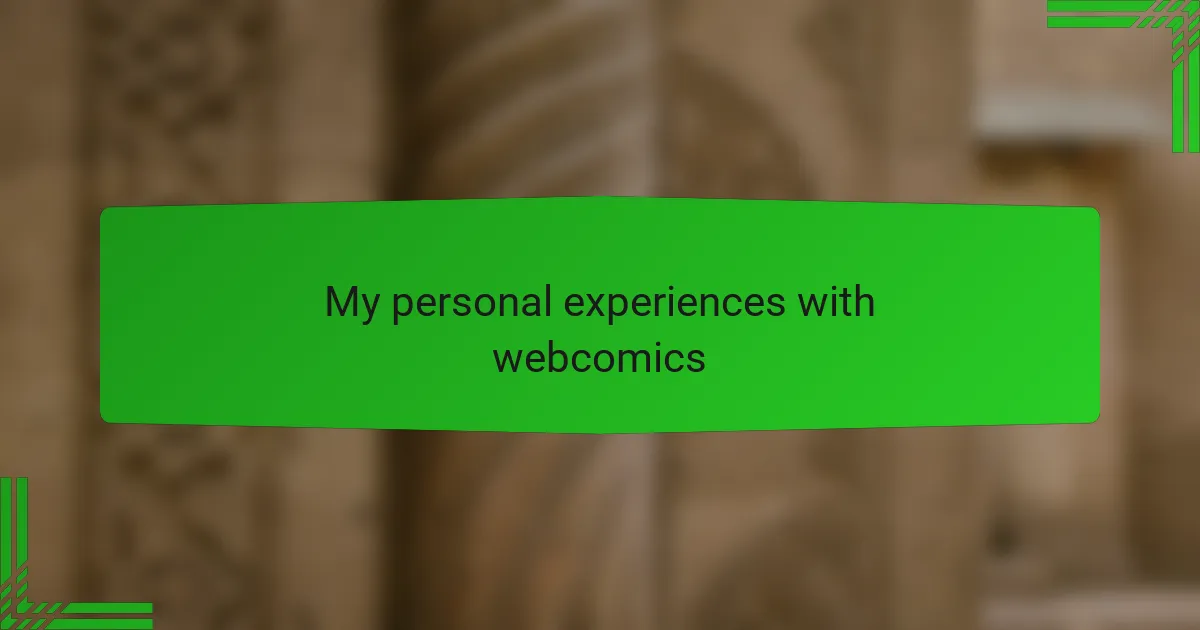
My personal experiences with webcomics
When I first stumbled upon webcomics, it was like discovering a new world. Their unique combination of art and storytelling captivated me immediately. I vividly remember reading a webcomic late into the night, feeling an emotional connection to the characters that I had never felt with traditional comics.
One of the aspects I found most exciting is how webcomics empower creators to experiment with form and style. Unlike in print media, webcomic artists can take creative risks without the constraints of traditional publishing. This freedom often leads to innovative storytelling methods, such as integrating animations or interactive elements, which is something I’ve enjoyed exploring in various webcomics.
- The accessibility of webcomics allows for diverse voices and stories to emerge.
- I often feel a personal connection with creators through platforms like Patreon.
- Webcomics frequently tackle social issues in a way that resonates with contemporary audiences.
- I appreciate how easily I can revisit my favorite series online whenever I want.
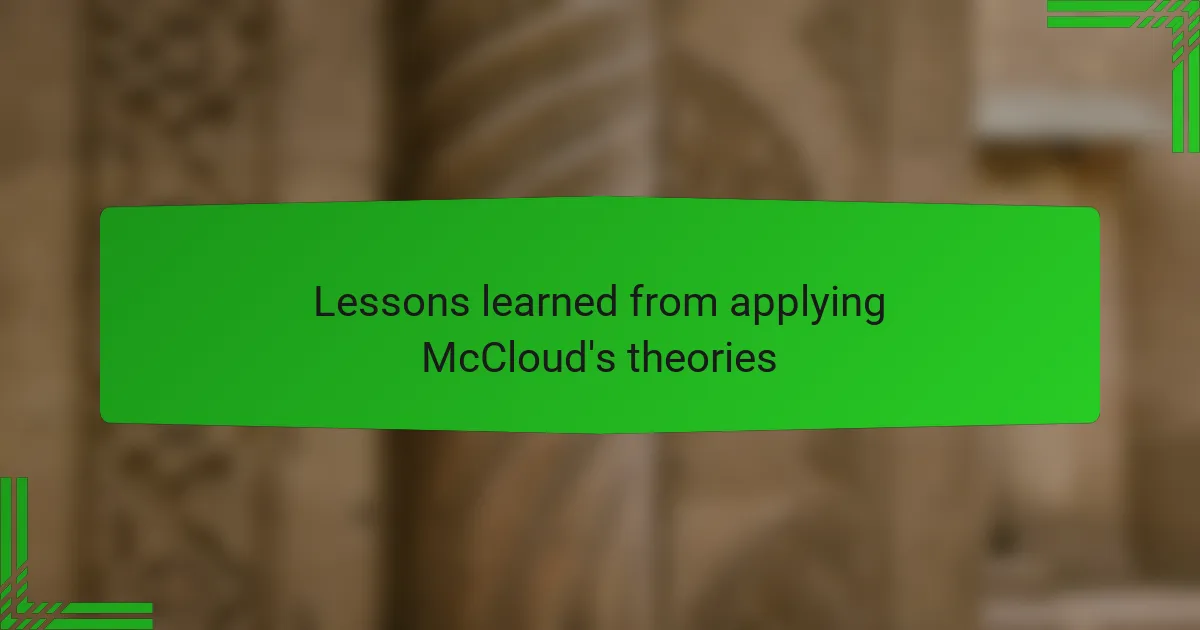
Lessons learned from applying McCloud’s theories
Applying Scott McCloud’s theories to my webcomic experience has been incredibly enlightening. One major lesson I learned is the importance of clarity in visual storytelling. I vividly remember a time when I used complex layouts and overcomplicated visuals, only to receive feedback that my audience struggled to follow the narrative. Streamlining my art and focusing on the relationship between images and text transformed my storytelling effectiveness.
Another vital insight was the impact of pacing in comics. Experimenting with panel layouts based on McCloud’s concepts helped me control the rhythm of my story, leading to a more immersive experience. For instance, during intense scenes, I would vary the size of my panels to create urgency, which my readers really appreciated.
Key lessons learned:
– Emphasize clarity in visuals to enhance understanding.
– Use panel size and arrangement to manipulate pacing.
– Simplify layouts to avoid overwhelming the reader.
– Balance between text and imagery for effective storytelling.
– Experiment with different styles to discover what resonates best with your audience.
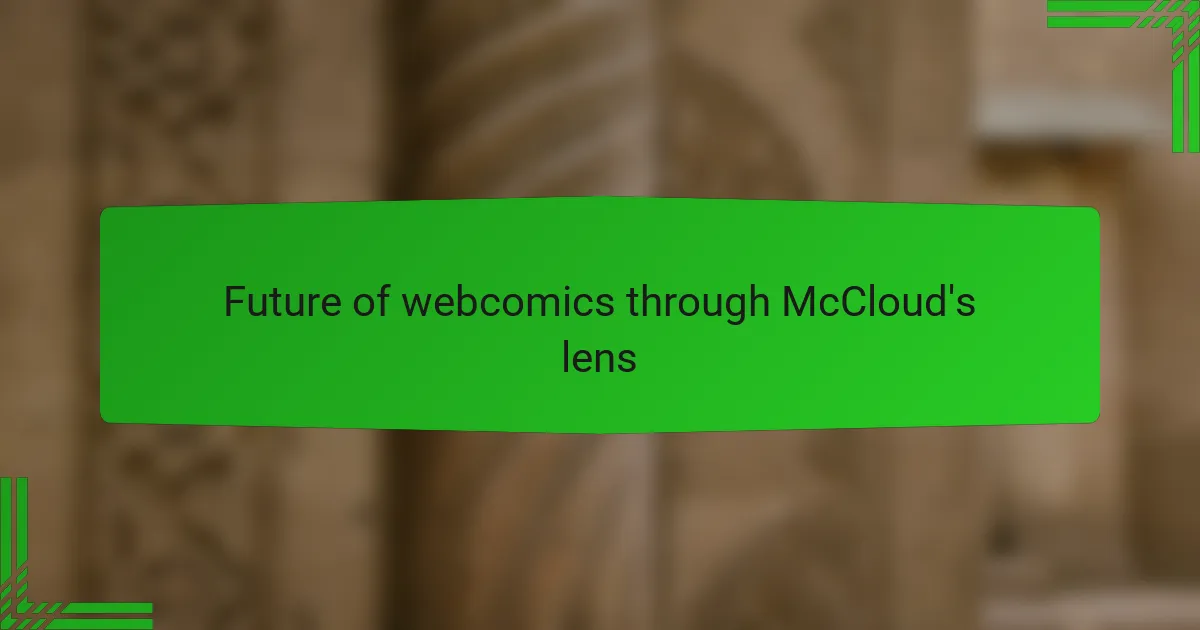
Future of webcomics through McCloud’s lens
Exploring the future of webcomics through Scott McCloud’s lens is both exciting and thought-provoking. I’ve found that his concepts of comics as a medium really open up opportunities for creators to play with structure and narrative in innovative ways. For instance, the flexibility of webcomics allows for experimentation with pacing and visual storytelling that traditional print comics can’t always accommodate.
I remember delving into McCloud’s theories while working on my own webcomic project. His insights encouraged me to think deeply about the relationship between image and text. This reflection allowed me to create interactions between characters and the reader that deepen engagement, making the experience richer and more immersive.
Here’s a neat comparison table highlighting some key aspects of traditional comics versus webcomics through McCloud’s perspective:
| Aspect | Traditional Comics | Webcomics |
|---|---|---|
| Format | Physical media | Digital media |
| Pacing | Controlled by the reader | Variable; influenced by scrolling |
| Accessibility | Limited to physical availability | Accessible globally online |
| Interactivity | Static experience | Potential for dynamic engagement |
